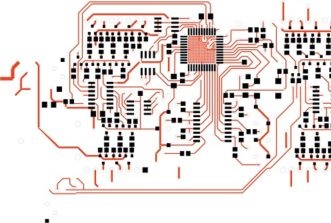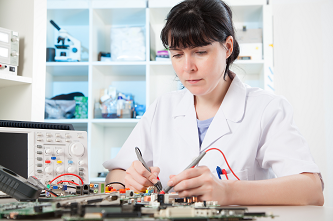A Brief History of Xilinx
29/03/2018, hardwarebee
Xilinx is an amazing FPGA company with an impressive track record of success. Xilinx creates, develops, and offers FPGA devices that are programmable along with software that work in conjunction to their main products. Xilinx is the leading supplier of FPGAs in the world.
Founding
In 1984, Ross Freeman and Bernard Vonderschmitt founded Xilinx. Before, they had worked as engineers creating chips at the Zilog Corporation. Until the founding of Xilinx, Zilog was one of the leading developers of integrated circuits and solid-state devices. However, it was Freeman who came up with the idea of creating chips that were programmable, so the consumer could program each chip to their needs rather than having to purchase preprogrammed chips.
Freeman’s idea was right on the edge of technology as programmable chips were quite expensive. However, when new manufacturers overseas opened, particularly in Japan, it made the creation of programmable chips far more affordable. Freeman and Vonderschmitt seized the opportunity by starting up Xilinx and ordering the chips.
Success
By providing essentially blank FPGA chips for affordable prices, Xilinx changed the semiconductor market. Xilinx created the first fully programmable gate array or FPGA chip. By November of 1985, Xilinx was selling their first products.
The combination of selling FPGA chips that customers could program with the advanced semiconductors that were being manufactured in Japan for Xilinx meant that the company quickly found success. By 1987, Xilinx offers the next generation of FPGA chips that could compete with almost all non-field programmable chips that were on the market. For most electronic devices, switching to the FPGA chip became a no-brainer and Xilinx profited as a result.
By the end of the 1980s, Xilinx had managed to find considerable success, earning enough in profit to pay off its investors. Sadly, Richard Freeman passed away in 1989 as the company was reaching its full market potential and Vonderschmitt took over as president.
By the mid-1990s, Xilinx has expanded considerably in terms of the market share and their profit margins. From 1996 to 2013, the company grew from $560 million to $2.2 billion while Xilinx expanded their market outside the US to Asia, Europe, and India. Xilinx controls the lion’s share of the market for FPGA chips which is still the backbone of many electronic devices today.
Xilinx Today
Xilinx has expanded its products past FPGA chips to include design tools, and devices with vast functionality and reference designs. The new 3D chips that were introduced by Xilinx have greater potential compared to the FPGA designs and the company still sits firmly at the top of the marketplace in its field. By 2014, Xilinx introduced a new generation of FPGA chips, the UltraScale 20nm which has made a big impact on the market.
Xilinx still runs off the same philosophy as its founders Freeman and Vonderschmitt believed in when the company was first created back in 1984, to emphasize innovation and address the needs of their customers through FPGA chips and their successors.
AMD acquired Xilinx in October 2020 in a transaction valued at $35 billion.













